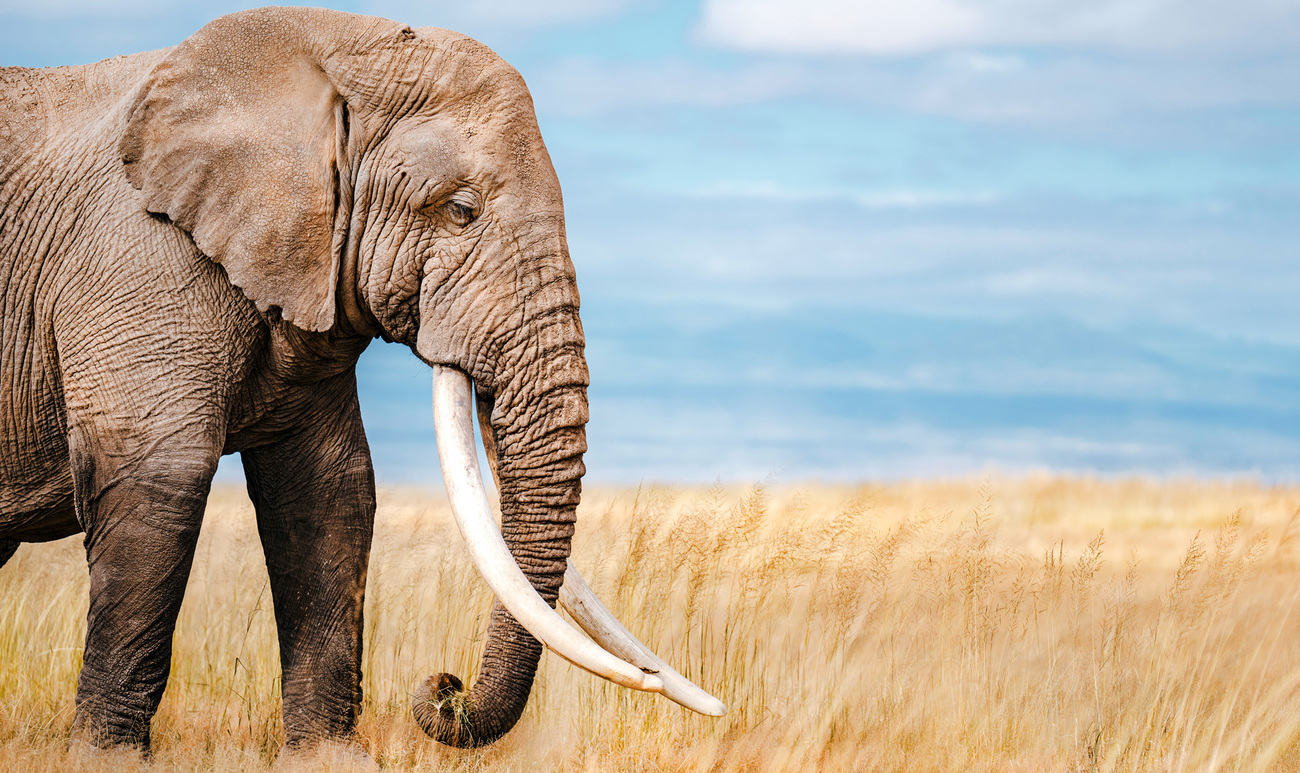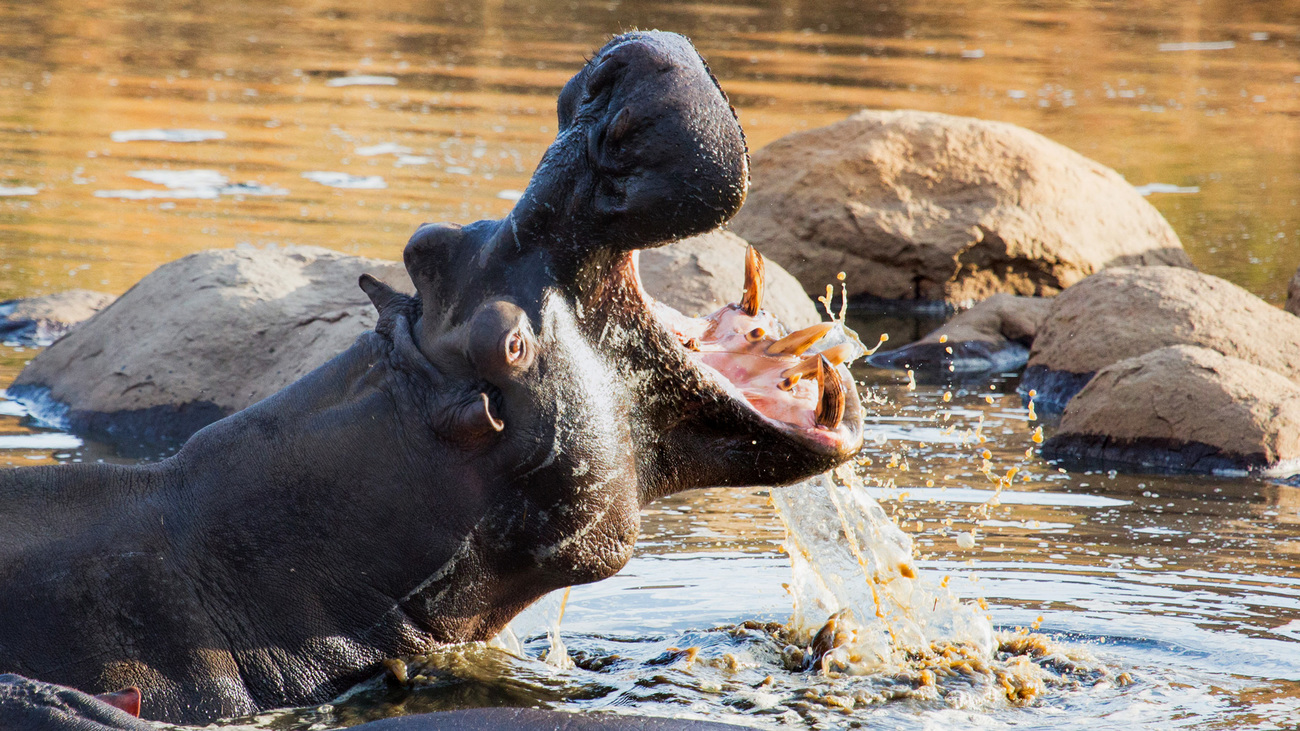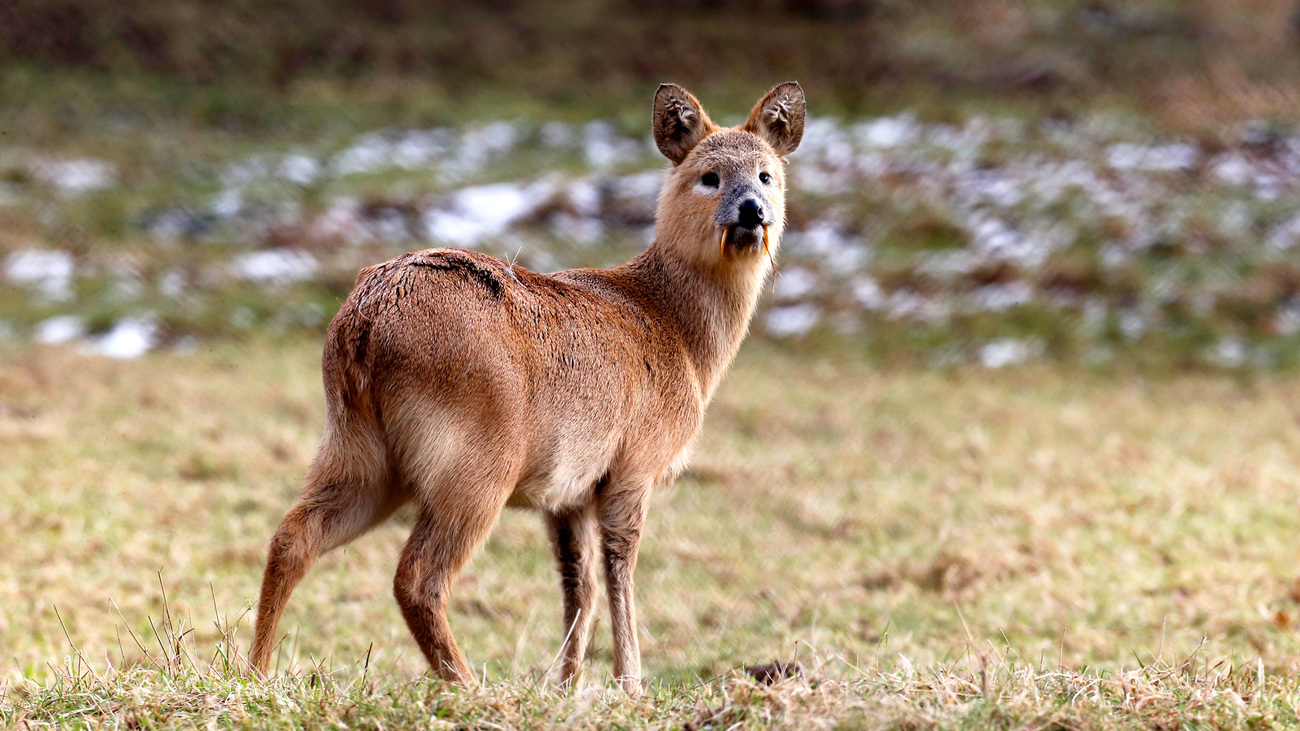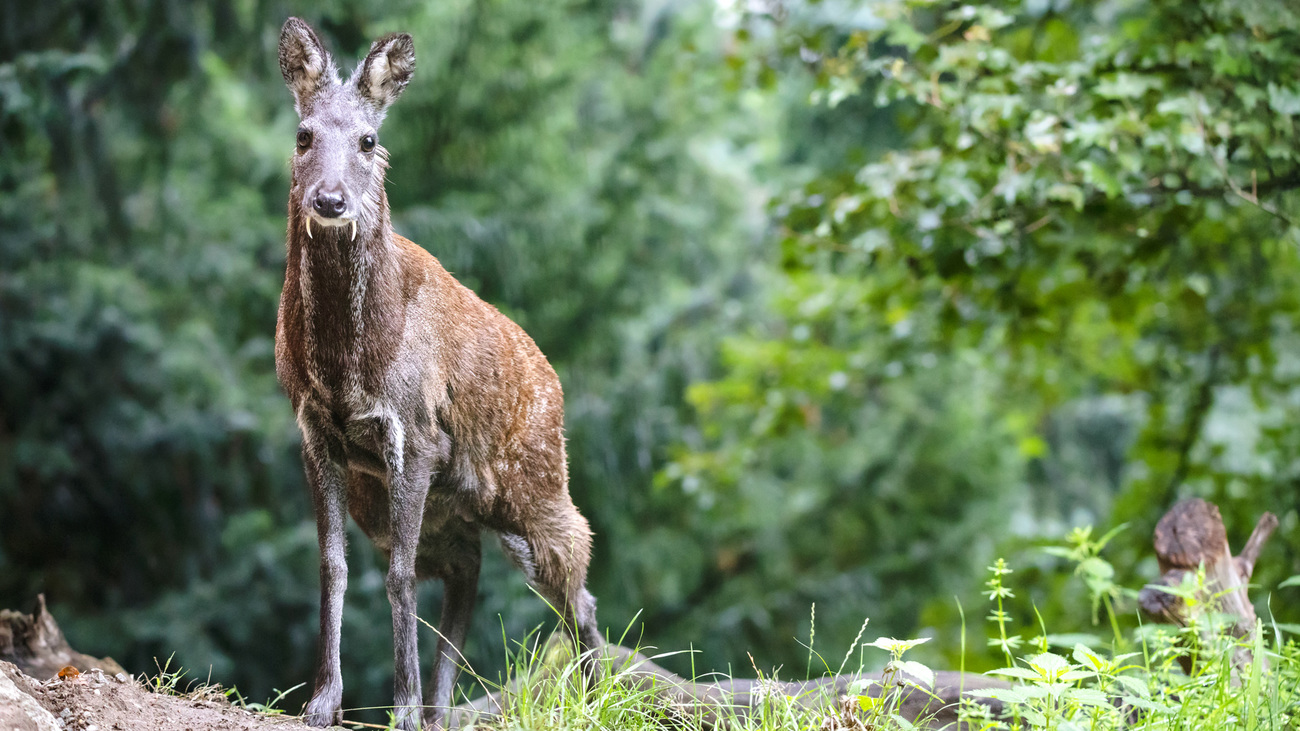Blog
Can animals predict earthquakes and other disasters?
Read more16 Terrific Animals With Tusks: Facts & Photos
Tusks have fascinated humans throughout history. These strikingly long teeth-like appendages grow far beyond the mouth to serve several purposes, including defence, digging, and mating, and sometimes they are even used as tools.
The main differences between teeth and tusks are that tusks continue to grow throughout an animal’s life; they’re made from dentine, not coated in enamel; and they’re held in place by ligaments.

While they’re most commonly associated with elephants, many animals have tusks across various parts of the world, though they are exclusive to mammals. Each of these species has unique tusks that benefit them in different ways.
Sadly, many of these animals and others around the world face serious threats to their survival in the wild. If you want to get involved in helping animals and support IFAW’s conservation and rescue efforts, learn more about our work and how you can take action.
Let’s explore some different animals with tusks and how they put them to use.
Tusks are found in a variety of mammal species worldwide, from land-dwelling animals like elephants and deer to ocean-dwellers such as walruses and whales.
When you think of tusks, elephants are likely the first animals that come to mind. Elephants are the largest living land animals, with huge tusks to match. There are two main species of African elephants: the African forest elephant (Loxodonta cyclotis) and the African savannah elephant (Loxodonta africana).
African forest elephants are mainly found in the dense rainforests of West and Central Africa, including countries like Gabon, Republic of the Congo, and Cameroon.
Male forest elephants are larger than females, with longer tusks that sit further apart. Forest elephants’ tusks are thin and straight rather than curved. Forest elephants use their tusks to feed by tearing bark off trees or digging up roots. They also use them as tools to clear and move through forest patches or for self-defence when fighting.
African elephants are hunted for their ivory tusks to this very day, with poaching as the main cause of death for the species. Sadly, they are critically endangered, and their population is declining.
African savannah elephants live in various habitats across sub-Saharan Africa, including grasslands, savannahs, and forests. Both male and female savannah elephants have tusks that are larger than those of forest elephants and curve outward.
Like forest elephants, savannah elephants are hunted for their ivory tusks, and poaching is the primary threat to their survival. They are classed as endangered by the IUCN.
Due to poaching’s impact, more elephants are being born today without tusks. This is because female elephants that have no tusks are now more likely to survive and reproduce.

Asian elephants (Elephas maximus) are found in various South and Southeast Asian habitats, including grasslands, dry and wet forests, and agricultural areas.
Unlike their African cousins in the Elephantidae family, not all Asian elephants have ivory tusks. Only some males have large, prominent tusks—these males are often referred to as ‘tuskers’. Female Asian elephants and most males tend to have much smaller tusks called ‘tushes’, if they have any at all. Tushes are small and brittle and can break easily. Similarly to African elephants, Asian elephants use their tusks for foraging, stripping bark, digging, and self-defence.
The number of Asian male elephants with tusks varies by region. It’s estimated that less than 10% of Asian male elephants in Sri Lanka have tusks, compared to around 90% in India. This may reflect the history of ivory hunting in the regions. According to the IUCN Red List, Asian elephants are endangered and have a decreasing population. Major threats to the species’ survival include human-elephant conflict.
Walruses are large marine mammals found in the Arctic and sub-Arctic shallow ocean waters. There are two subspecies of walrus: the Atlantic walrus (Odobenus rosmarus rosmarus) and the Pacific walrus (Odobenus rosmarus divergens).
Both male and female walruses have tusks that can grow up to one metre (3.2 feet) in length. Male Pacific walruses tend to have larger tusks than Male Atlantics. The males typically use their tusks to fight and establish dominance and display them to attract females. Walruses also use tusks to defend themselves against predators and to help haul their bodies out of the water and onto ice.
The species has historically been hunted for their ivory tusks, leading to population decline. However, conservation efforts have helped reduce this pressure in many areas. Today, walruses are considered vulnerable.
The narwhal (Monodon monoceros), often referred to as the ‘unicorn of the sea’, is a unique species of toothed whale, characterised by a long, spiral tusk protruding from its head. Narwhals are normally found along the coastal waters and rivers of the Arctic.
Narwhals have only two teeth. In females and some males, both of these teeth will remain undeveloped, though in most males, the left tooth will grow into a tusk more than three metres (9.8 feet) long. On very rare occasions, both males and females may develop two tusks. Interestingly, this tusk features a grooved spiral pattern. It’s thought that these tusks enable narwhals to hunt as well as detect the salinity of the water in which they’re swimming. The species has been hunted in the ivory trade for its distinct tusk.
Globally, narwhals are classed on the IUCN Red List as least concern. However, in the European region, they’re classed as vulnerable.

Wild boars (Sus scrofa), or wild pigs, are native to Europe, Asia, and North Africa. They have also been introduced to other parts of the world, including North and South America, where they are considered an invasive species. They’re found in a variety of habitats, including forests, woodlands, and grasslands.
Both sexes of wild boars have tusks, though they’re typically smaller in females, called sows. The tusks continue to grow throughout the boar’s life and can reach lengths of up to 12 centimetres (4.7 inches) in males. Males use their tusks to compete with rivals for females, as well as for foraging, digging, and defence against predators. The species is hunted more as a result of human-wild boar conflict than specifically for their tusks. The conservation status of the wild boar is least concern.
Babirusas are a group of pig-like mammals native to Indonesia’s tropical rainforests and woodlands. There are several species of babirusa, including the hairy babirusa (Babyrousa babyrussa), Sulawesi babirusa (Babyrousa celebensis), and Togian Islands babirusa (Babyrousa togeanensis).
Babirusas are known for their distinctive appearance, especially their long, curved tusks. While both male and female babirusas possess tusks, they are more pronounced in males, with exaggerated growth from both their upper and lower jaw. The tusks in their upper jaw grow upwards, piercing their skin and curving backwards to almost reach the forehead. These tusks play a role in mating displays and in combat between mating rivals.
The babirusa is targeted by hunters for its tusks, as well as its meat and other body parts. Despite legal protections in place, illegal hunting and trade continue to pose challenges for babirusa conservation efforts. According to the IUCN Red List, the hairy babirusa is classified as vulnerable, as is the Sulawesi babirusa, while the Togian Islands babirusa is endangered.
Hippos, or hippopotamuses, are large, semi-aquatic animals native to sub-Saharan Africa. There are two species of hippo: the common river hippopotamus (Hippopotamus amphibious) and the smaller pygmy hippopotamus (Choeropsis liberiensis).

Common river hippos inhabit a range of freshwater habitats, including rivers, lakes, and swamps, where they spend much of their time submerged in water to stay cool and avoid sunburn.
Hippos possess large tusks that can grow up to 50 centimetres (19.6 inches) long. They’re used as powerful defence weapons against both predators and rival hippos. While both sexes have tusks, they’re usually more pronounced in males. They can often make it difficult for these herbivores to eat, as the tusks interlock when common hippos close their jaws, preventing a side-to-side chewing motion.
The illegal trade in hippo teeth makes poaching one of the species’ biggest threats to its survival. As a result, the common hippo is classed as vulnerable.
Pygmy hippos are found more specifically in the forests of West Africa, near rivers and streams.
Compared to the common hippo, pygmy hippos only have one set of incisors. Both male and female pygmy hippos have tusks, making it more difficult to tell them apart. As herbivores, they also don’t use their tusks to attack prey but instead use them for self-defence.
Pygmy hippos aren’t necessarily targeted for their teeth due to their low trade value, though they are hunted opportunistically. According to the IUCN Red List, they are endangered. Deforestation is their biggest threat.
The common warthog (Phacochoerus africanus), also known simply as the warthog, is native to sub-Saharan Africa’s savannahs, grasslands, and woodland habitats.
Warthogs are a species of pig characterised by the distinctive warty protrusions on their faces, bristly manes, and large tusks that protrude and curve upward from their mouths. Though both sexes have tusks, male tusks are usually larger, reaching up to 89 centimetres (2.9 feet) long, compared to 25 centimetres (9.8 inches) in females. Males use their tusks for displays of aggression against mating rivals, though they’re also used for digging and defending themselves against predators.
Warthogs are sometimes targeted by hunters for their ivory tusks, and they’ve adapted to forage at night when this threat is reduced. Their conservation status is listed as least concern.

Muntjacs, also known as barking deer or vampire deer, are a group of small deer species native to various forested regions of Asia. There are several species of muntjac, including the black muntjac (Muntiacus crinifrons), the Annamite muntjac (Muntiacus truongsonensis), and the large-antlered muntjac (Muntiacus vuquangensis), among others.
Muntjacs have unique tusks that grow downwards from their upper jaws, reaching around seven centimetres (2.7 inches) below the lower lip. Both males and females have these tusks, which are typically more pronounced in males. As with many other animals with tusks, male muntjacs use them to display and attract females and engage in combat with other males. Otherwise, their tusks are used to defend themselves and their territory and forage and feed.
This species is threatened by illegal hunting for its tusks and meat. The conservation status of each species varies, with black muntjacs listed as vulnerable, large-antlered muntjacs as critically endangered, and Annamite muntjacs as data deficient. The northern red, southern red, and Reeves’ muntjacs are all classed as least concern.
Water deer (Hydropotes inermis), also known as Chinese water deer, are a species of deer native to China and Korea. They’re specifically found in aquatic environments, including wetland areas, marshes, riverbanks, and reed beds.
While most deer species grow antlers, this species grows tusks that can reach eight centimetres (3.1 inches) long. Both male and female water deer have these tusks, though males’ tusks are typically longer and more pronounced. This deer species uses their tusks in mating rituals and for defensive purposes. It’s also thought that in adult water deer, these tusks are mobile, allowing them to be moved for feeding purposes.
Water deer aren’t hunted for their tusks in the same way as other species, such as elephants, but they are still hunted and may be collected as trophies. They’re classed as a vulnerable species.

The strap-toothed whale (Mesoplodon layardii), or Layard’s beaked whale, lives in the Southern Hemisphere’s temperate and sub-Antarctic waters. They prefer deep offshore waters and are known to inhabit areas such as the South Atlantic, Indian, and Pacific Oceans.
Strap-toothed whales are medium-sized whales, measuring around 6.2 metres (20.3 feet) in length. Only male strap-toothed whales have tusks. These tusks emerge from the lower jaw and grow upwards, sometimes crossing over one another above the upper jaw. While it’s not known exactly what these tusks are used for, researchers assume that they play a role in sexual selection. This could encompass competition amongst males and displaying to attract females.
The tusks of strap-toothed whales don’t hold significant commercial value, so they’re not targeted specifically for their tusks. Their conservation status is currently listed as least concern.
The Siberian musk deer (Moschus moschiferus) is native to East Asia’s forests and mountainous regions.
Like water deer, the Siberian musk deer lacks antlers. This species is renowned for its peculiar tusks, which are sometimes called fangs. These tusks grow downwards from the corners of their mouths and can grow up to 10 centimetres (3.9 inches) long. Female Siberian musk deer don’t usually possess these tusks, which males primarily use for mating and establishing dominance.
Siberian musk deer are often hunted for their musk glands and tusks, which are highly valued in traditional Chinese medicine and the perfume industry. They’re classed on the IUCN Red List as vulnerable.

Peccaries are also known as javelinas, a name that derives from the Spanish word for ‘spears’ and refers to their striking tusks. They’re native to the Americas and distributed across desert, forest, and grassland habitats. Peccaries belong to the family Tayassuidae, with three species: the Chacoan peccary (catagonus wagneri), collared peccary (pecari tajacu), and white-lipped peccary (tayassu pecari).
These pig-like mammals are equipped with short, sharp tusks that grow from the sides of their mouths, reaching around 2.5 centimetres (0.9 inches) in length. In general, tusks are present in both male and female peccaries, playing similar roles in defence, foraging, and social interactions, regardless of sex. However, males typically have slightly larger tusks that come in handy during breeding season, when they use them in displays of dominance or rivalry.
While they’re not specifically targeted for their tusks, peccaries are still hunted for sport, as trophies, and for their meat. Although the conservation status of the collared peccary is listed as least concern, the white-lipped peccary is vulnerable, and the Chacoan peccary is endangered.
Hyraxes are small mammals found across various habitats in Africa and the Middle East, including rocky outcrops, cliffs, savannahs, and forests. Hyraxes belong to the order Hyracoidea and include six species, including the rock hyrax (Procavia capensis) and tree hyrax (Dendrohyrax arboreus).
Both male and female hyraxes feature small tusks, which they use to fend off predators such as eagles or snakes. They also play a role in social interactions to establish dominance and feed. Despite their rodent-like appearance, they are more closely related to elephants than rodents.
Hyraxes aren’t typically hunted for their tusks. Most hyrax species are classed on the IUCN Red List as least concern, although the eastern tree hyrax is listed as near threatened.

The tufted deer (Elaphodus cephalophus) is a deer species native to the montane forests of China and northeastern Myanmar, at elevations of 300 to 4,500 metres (984 to 14763.78 feet).
This species is particularly small, reaching heights of up to 70 centimetres (27 inches). Their most distinctive features are the prominent tuft of black hair on their foreheads and the short, curved tusks that protrude from the mouths of males, which usually grow to 2.5 centimetres (0.98 inches) long. Only the males have these tusks, which are primarily used for defensive and territorial purposes.
Tufted deer are hunted for their meat and sometimes their tusks. Although the tusks of tufted deer are not as highly prized as those of elephants or other animals, they may still be collected as curiosities or trophies. The IUCN Red List classifies this species as near threatened.
Chevrotains, also known as mouse deer, are typically found in dense tropical forests, swamps, and thickets across parts of Southeast Asia and Africa. Despite their common name, they are not true deer. Chevrotains belong to the family Tragulidae, which includes several species such as the water chevrotain (Hyemoschus aquaticus), lesser mouse-deer (Tragulus kanchil), and greater mouse-deer (Tragulus napu).
Chevrotains are among the smallest ungulates in the world, with some species measuring about 45 to 85 centimetres (17 to 33 inches) in length. Males have small, sharp tusks, which are elongated upper canine teeth. Although their tusks are not as prominent as those of some other tusked animals, they still serve important functions in the social dynamics of chevrotains, including competition with other males and settling territorial disputes.
Though not specifically targeted for their tusks, chevrotains can be hunted for their meat, which is considered a delicacy in some cultures. Some chevrotain species are classed as least concern on the IUCN Red list, including the Indian chevrotain, yellow-striped chevrotain, and water chevrotain. However, the Balabac mouse deer is endangered.
Want to learn more about other fascinating animals around the world? Check out IFAW’s animal pages. You can also learn how to get involved and take action for animals.
Every problem has a solution, every solution needs support.
The problems we face are urgent, complicated, and resistant to change. Real solutions demand creativity, hard work, and involvement from people like you.
Unfortunately, the browser you use is outdated and does not allow you to display the site correctly. Please install any of the modern browsers, for example:
Google Chrome Firefox Safari